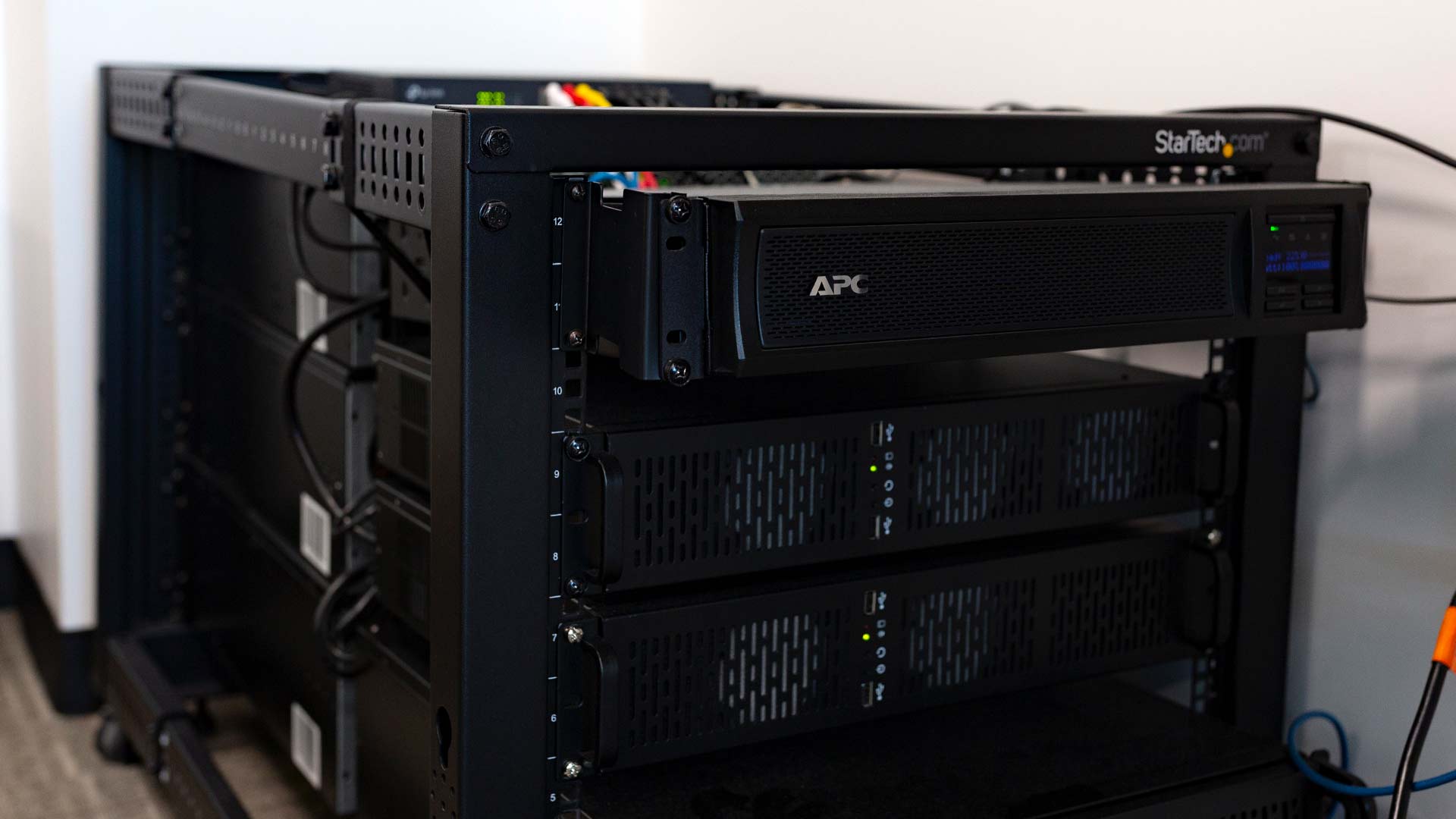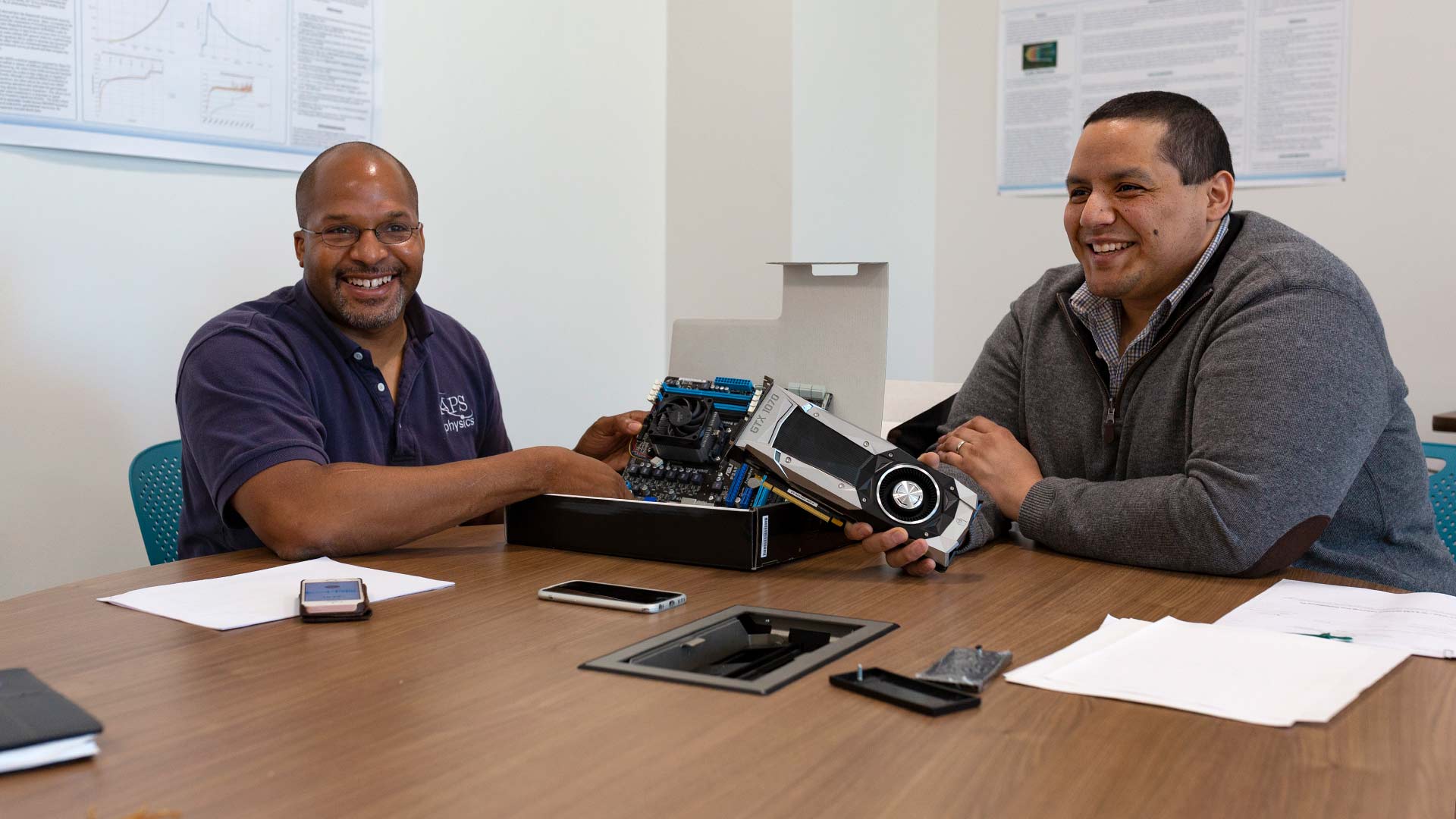- Future Students
- How to Apply
- Visit UHCL
- Admitted Students
- Tuition, Costs and Aid
- Degrees and Programs
- Contact Admissions
- Current Students
- Class Schedule
- Academic Calendar
- Advising
- Events
- Library
- Academic Resources and Support
- Student Services and Resources
- Alumni
- Lifetime Membership
- Alumni Events
- Update Your information
- Awards and Recognitions
- Give to UHCL
In mathematics, the word “singularity” loosely translates to a point at which a function
takes an infinite value. In physics, “singularity” is a condition in space-time when
matter is infinitely dense, as at the center of a black hole. For University of Houston-Clear
Lake’s computational physics students, “singularity” means all the above – and is
what they affectionately call their homebuilt supercomputer.
Singularity looks like a bunch of used computer cases stacked on a cart for recycling. But powered up, it’s a cluster of eight processors, each containing six cores – 44 to 46 more cores than the computer sitting on or under most people’s desks. It doesn’t compare to University of Houston's Opuntia Cluster supercomputer, which has 1,860 cores and costs millions. UH-Clear Lake’s total investment in Singularity is just under $7,000 – including parts for an upgrade that will double the number of theoretical floating point operations per second from 600 million to 1.2 trillion. In computerspeak, that’s 1.2 teraflops.
What does that mean? If UH’s cluster is a Bentley, then UHCL’s cluster is a souped-up Honda Civic from the movie, “Fast and Furious,” say UHCL Professor of Physics David Garrison and graduate student Christopher Ramirez, who manages Singularity.
But its real advantage is that UHCL’s computational physics students can get their hands on their own do-it-yourself supercomputer earlier in their studies, and much more often than they could on other institutions’ supercomputers, where access, programming time and digital storage are tightly allotted.
Students can log on remotely with their campus username and password to start or monitor their programs, some of which might take weeks to run due to their computational complexity. Singularity’s other advantages include its relatively easy maintenance – rebooting can also be done remotely – and the fact that it doesn’t require a temperature-controlled environment.
“The neat thing is, basically, we can have a room full of students all using this one machine and not worry about any scheduling conflicts. We can administer it without actually being on campus. I can log on from my cell phone, edit and run code from anywhere in the world,” Garrison said.
Singularity processes in parallel, meaning that highly complex equations can be broken down into subroutines and solved simultaneously for faster processing. This is necessary for computational physics, which runs simulations against hypotheses by taking the math far beyond chalkboard calculations. Currently, Singularity is running simulations on the gravitational waves that occurred in the split second after the Big Bang.

Singularity is the latest iteration of the physics department’s endeavors in high-performance
computing. It was built by physics students under Garrison’s oversight. Ramirez, a
military veteran working on his master’s in physics, also works full-time at X-ISS,
a company that manages high-performance computing systems for engineering firms, oil
and gas companies and others. “I got the job because of all the work I did here,”
he said. “The skills that I had to learn here worked out to my benefit.”
“We’ve become somewhat of a DIY shop,” Garrison said. “Students learn from building
it. They learn from programming it. They could pretty much go through the stuff that
people throw out and put together a computer, put them together into a computational
cluster, install (free operating system) Linux on it, do basic science, develop code
and publish papers.”

What makes a computer super? Generally speaking, it’s an ever-raising bar. The fastest
computers in the world are measured in petaflops – quadrillion (a thousand trillion)
floating point operations per second.
Merriam-Webster dictionary defines supercomputer as a “large very fast mainframe used
especially for scientific computations.” These days, supercomputers don’t have to
be large, mainframed nor used solely for scientific computations. For comparison,
Singularity’s capability in teraflops is on par with PlayStation 4 and Xbox One –
game systems desired for their high-definition graphics.
The growth of computer gaming, with ever-better graphic processing units (GPUs), has
made DIY supercomputing possible. Low-cost, high-performance GPUs are also capable
of making scientific calculations. In 2010, the U.S. Air Force built a supercomputer
from 1,760 PlayStation 3s.
Ramirez has based his graduate thesis on ways to accelerate the simultaneous solutions
of derivatives in differential equations using the GPUs – important to solving plasma
physics equations. After he graduates, the newlywed intends to eventually pursue his
doctorate. “I would love to get my Ph.D. at some point. But working full time, and
being just married, that may be on hold for a little bit. Eventually I would like
to become a professor or the director of a research and computing center.”
UHCL offers a bachelor’s in physics with a specialization in computational physics,
as well as a master’s in physics. For more information, visit www.uhcl.edu/physics.







